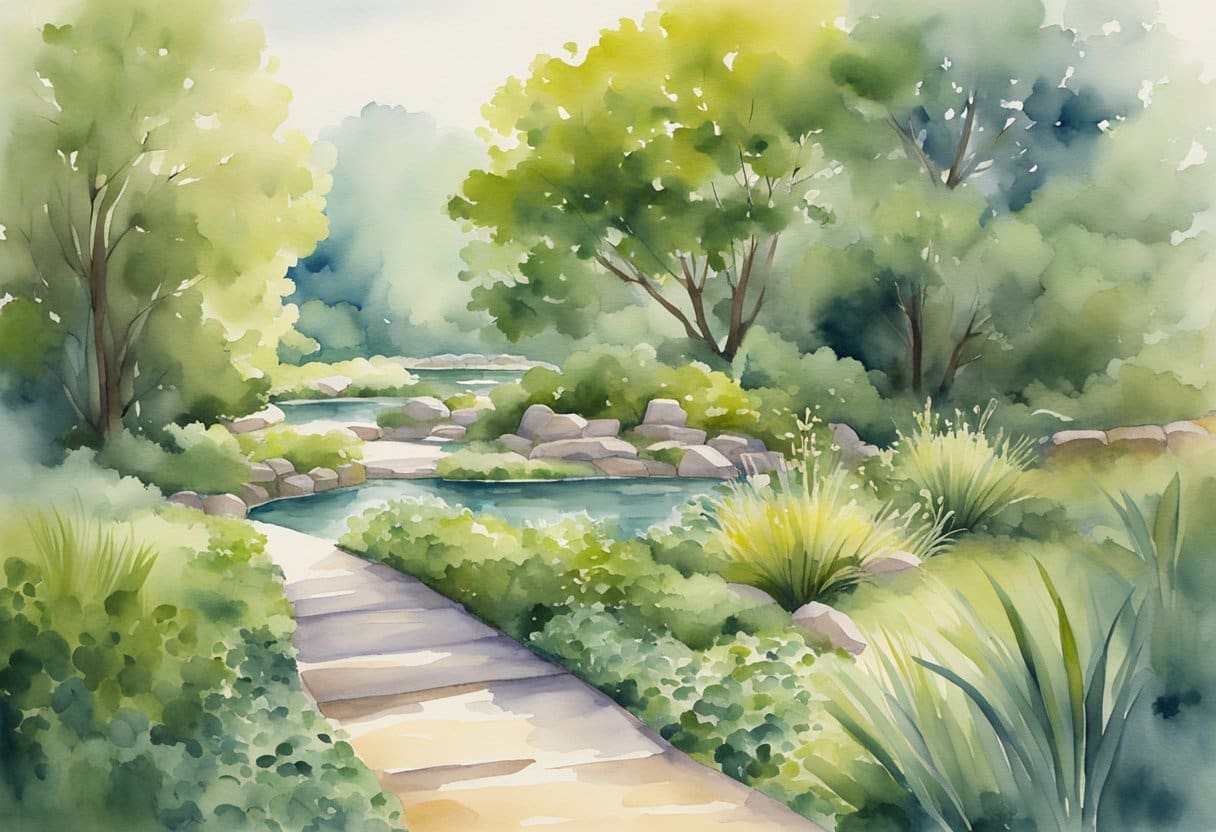Introduction
The concept of outdoor group therapy activities for adults is gaining momentum in the realm of mental health for its transformative potential. This unique approach synergizes the therapeutic benefits of group therapy and the calming effects of nature, offering an environment conducive to deep introspection and collective healing.
Outdoor group therapy activities are not just about discussing problems or experiences; they involve immersion in nature’s calming environments, facilitating a powerful connection to the self and others. These sessions can include activities like nature walks, hiking, gardening, or even
The effectiveness of these outdoor therapy programs in promoting mental and emotional well-being is backed by a growing body of scientific evidence. Consequently, their popularity has surged in recent years as individuals seek alternative therapeutic methods to traditional indoor settings.
Not limited to professional settings, you can explore different outdoor therapy programs or even initiate your own group with friends or loved ones. The key is to promote connection—both with nature and each other—as a means of fostering healing and growth.
For those eager to delve into this promising form of therapy, Boardwalk Recovery offers a variety of outdoor therapy programs worth exploring. Remember, every journey towards healing is unique; what matters most is finding the path that resonates with you.
The Healing Power of Nature and Outdoor Recreational Therapy
Nature has a unique ability to heal, offering tranquility and vast spaces as a backdrop for therapeutic work. Its soothing effect on the mind, ability to reduce stress, and fresh perspective on life’s challenges make it an ideal setting for group therapy activities. One such approach that leverages the healing power of nature is Outdoor Recreational Therapy, which unlocks the potential of outdoor activities to enhance the therapeutic process.
Here are some ways in which nature and outdoor recreational therapy can work together to foster healing:
1. Nature Walks
A simple yet effective way to connect with nature is through walks. Whether it’s among trees, alongside streams, or through fields, walking in nature helps us ground ourselves in the present moment. During these walks, you can incorporate activities that promote sensory awareness and self-reflection:
- Sensory Awareness Exercises: Encourage the group to focus on their senses one by one—listening to the rustling leaves, feeling the texture of bark, or smelling the earth after rain. This practice can heighten appreciation for the environment and promote
mindfulness . - Nature Journaling: Provide each participant with a notebook to jot down thoughts, sketch flora and fauna, or write poems inspired by their surroundings. This activity allows for creative expression and can serve as a personal record of their journey.
- Guided Imagery: Pause at peaceful spots to lead guided imagery exercises that help members imagine serene scenes or confront internal challenges in a safe space.
By incorporating these practices into nature walks as part of outdoor recreational therapy, you foster a deeper connection between individuals and their environment.
2. Hiking
Hiking combines physical activity with introspection, making it an excellent choice for outdoor therapy. It presents challenges that mirror real-life obstacles and provides opportunities for personal growth. When planning hikes for therapeutic purposes:
- Assess Fitness Levels: Choose trails that match the group’s overall fitness level to ensure everyone can participate comfortably.
- Prioritize Safety: Check trail conditions and weather forecasts beforehand; bring first aid supplies and have backup plans.
- Encourage Discussions: Use natural rest stops as moments for reflection or sharing experiences among group members.
The shared experience of overcoming physical challenges during hikes can foster camaraderie and offer valuable lessons for personal development.
3. Gardening
Gardening is a nurturing activity that promotes growth, both in plants and individuals. It teaches us to be patient, observant, and caring—a perfect parallel to the therapeutic process. To start a gardening project:
- Find Suitable Space: Even small plots or container gardens can work; what matters most is accessibility for all group members.
- Assign Roles: Let each member have specific responsibilities to foster a sense of ownership and teamwork.
- Practice
Mindfulness : Engage in gardening mindfully by focusing on sensations while handling soil or planting seeds—this can be grounding and meditative.
As plants thrive, participants can also witness their own progress—a powerful symbol of healing and renewal.
“In every walk with nature one receives far more than he seeks.” – John Muir
By incorporating outdoor recreational therapy into group therapy sessions through nature walks, hikes, and gardening projects, we can tap into nature’s inherent healing properties. Engaging with nature invites natural healing processes that complement traditional therapy methods. Each step taken outdoors
Incorporating Mindfulness and Meditation Techniques
Mindfulness and meditation are perfect complements to the healing effects of nature. They create a powerful combination that allows us to observe and accept things more deeply. When you practice
The Benefits of Meditating Outdoors
Meditating outdoors has its own unique benefits compared to meditating indoors. Being in nature adds an extra layer of sensory experience that can enhance your
1. Mindful Breathing
Choose a quiet spot in nature, such as by a flowing stream or under a group of trees. Focus on your breath, paying attention to its natural rhythm. Embrace any sounds from the environment as part of your
2. Loving-kindness Meditation
Also known as Metta Bhavana, this practice involves silently repeating phrases of goodwill towards yourself and others. Surrounded by the beauty of nature, it may become easier for you to generate feelings of kindness and empathy.
3. Walking Meditation
Engage in slow, deliberate steps while fully immersing yourself in each movement. As you walk through a forest trail or along the shoreline, be mindful of the life around you – every step becomes an opportunity to connect with nature and find inner peace.
Making Outdoor Activities Mindful
You can infuse
- While hiking, encourage everyone to notice each step they take, the way their weight shifts from heel to toe, and the textures beneath their feet. Encourage them to pause from time to time and observe the details in their surroundings – like the patterns on a leaf or the intricacies of a spider’s web.
- In gardening, bring attention to the sensations: the feel of soil against the hands, the warmth of sunlight on the skin, or the aroma of fresh herbs. With every action becoming intentional – from digging to planting to watering – participants can stay fully present in the moment.
- During challenging physical activities like rock climbing or kayaking, remind everyone to use their breath as an anchor. This shifts the focus from performance to simply experiencing each moment as it unfolds.
The Power of Yoga in Nature
Practicing
- Sun Salutations: Start your day by facing east and performing a series of Sun Salutations toward the rising sun. The rhythmic movements of this sequence align with nature’s own rhythms and symbolize new beginnings.
- Balance Poses: Doing Tree Pose (Vrksasana) amidst actual trees adds a whole new dimension to it. Balancing on one leg while reaching your arms towards the sky allows you to embody stability and growth, just like the surrounding plants.
- Restorative
Yoga : Poses like Child’s Pose (Balasana) or Corpse Pose (Savasana) can bring deep relaxation when practiced on soft grass or sand. Listening to the sounds of nature around you can further enhance this relaxation and help you feel more connected to your environment.
Simple Ways to Include Yoga in Outdoor Therapy
Incorporating
- Choose poses that are suitable for everyone in the group and can be done safely outdoors.
- Find flat surfaces that are free from any potential hazards to serve as your
yoga space. - Modify and adapt the sequences as needed to cater to the specific needs and goals of the group.
By combining
As we continue to explore outdoor spaces with a mindful mindset, we discover more layers of experience and reinforce an important truth: being fully present in our surroundings enriches our journey towards healing and personal growth.
Fostering Connection and Support through Group Activities
Creating a strong sense of community in an outdoor therapy group improves the therapeutic experience, helping each member in their journey towards healing. Outdoor activities provide a unique opportunity for individuals to connect with others, share experiences, and support each other in a healing environment.
1. Building Trust
Trust is crucial in any therapy group. Here are some exercises that can help build trust among group members:
- Icebreakers: Start sessions with activities designed to ease participants into interaction. For instance, ‘Two Truths and a Lie’ encourages members to share personal information in a playful manner.
- Trust Walks: Blindfolded guided walks where partners lead one another around natural obstacles promote reliance on each other’s guidance and judgment.
- Trust Falls: The classic trust fall exercise requires a leap of faith as members fall backward into the arms of their peers, building trust and cooperation.
These activities not only strengthen the connections within the group but also mirror the importance of trust in relationships outside of therapy.
2. Art Therapy Outdoors
Using art as a way to express oneself can be powerful. Here are some outdoor art therapy activities:
- Nature Collages: Using leaves, twigs, flowers, and other found items to create art pieces can help members express feelings nonverbally.
- Environmental Sculptures: Building structures from natural materials encourages teamwork and communication while fostering a deeper connection with nature.
- Landscape Drawing: Participants capture the scenery or abstract emotions evoked by their surroundings on paper, sharing their perspective with the group.
These activities allow individuals to project internal experiences onto external creations, deepening bonds within the group as participants explore each other’s artwork.
3. Celebrating Milestones
Acknowledging important moments in each person’s healing journey can be meaningful. Here are some ideas for ceremonies:
- Fire Ceremony: Group members write down what they wish to let go of on pieces of paper that are then burned in a fire, symbolizing release.
- Stone Stacking: Creating structures with stones at significant therapy milestones represents personal achievements.
- Tree Planting: As a symbol of growth and new beginnings, planting trees can be a powerful way to mark progress.
These ceremonies add depth to the therapy process and honor individual paths as part of a shared experience.
Through these outdoor activities, participants nurture their emotional and psychological wellbeing in nature. Trust-building exercises, art therapy outdoors, and milestone celebrations are just some ways to foster connection within a supportive community.
For more ideas on how to create a supportive community in group therapy, including emotional connection, education, support, encouragement, and guidance, you can explore these 29 Best Group Therapy Activities for Supporting Adults.
Addressing Specific Mental Health Challenges
Outdoor group therapy activities offer unique opportunities for healing and growth. However, it’s important to remember that these activities are not a substitute for professional care. If you’re dealing with a mental health condition, you should also seek help from healthcare professionals, who can provide specialized treatment and support.
1. Depression
Outdoor therapy activities can complement traditional treatments for depression such as medication and psychotherapy. Getting outside in nature can boost your mood and help reduce feelings of sadness or hopelessness. Activities like group hikes, gardening projects, or mindfulness exercises can provide natural stress relief and promote a more positive mindset.
Nature Walks
Walking in nature has been shown to significantly decrease depressive symptoms[^1^]. The combination of physical activity, sunlight, fresh air, and the beauty of the natural environment can have a profound impact on mood.
Group Support
Sharing experiences with others who may be going through similar struggles can foster a sense of camaraderie and mutual understanding. This shared experience often leads to feelings of acceptance and validation.
2. Coping with Loneliness
Feelings of isolation can be particularly suited to being addressed in an outdoor group therapy context. The vastness of nature reminds us of our connection to the world around us, helping alleviate feelings of loneliness.
Building Connections
Outdoor group activities provide opportunities to interact with others and form new friendships. Participating in communal tasks such as gardening or hiking also promotes cooperation and bonds among group members.
Mindfulness Practices
Spending time in nature allows you to practice
3. Navigating Grief and Loss
Outdoor therapy might facilitate emotional healing after a significant loss. Engaging in outdoor activities provides a safe space to express grief, remember loved ones, and find comfort in the support of others.
Memorial Activities
Planting a tree or creating an outdoor memorial can be a healing way to remember a loved one and express grief.
Group Support
Sharing stories and experiences with others in the group can provide comfort, understanding, and validation of the grieving process.
Please note that while these activities can be beneficial, they should not replace professional help. If you’re dealing with depression, loneliness, or grief, reach out to a mental health professional for support.
[^1^]: Stanford researchers find mental health prescription: Nature
Conclusion
The combination of group therapy with the outdoors provides a unique and meaningful path to wellness. Throughout this guide, you’ve learned about different outdoor group therapy activities for adults, each with its own therapeutic benefits. Whether it’s finding peace during a nature walk, celebrating together after a challenging hike, or finding solace in gardening, these activities leverage the healing power of nature.
As you embark on your healing journey, remember that the heart of outdoor therapy is being receptive to new experiences. The natural world has much to teach us and can bring us comfort as we grow and heal. It’s not so much about what activity you engage in, but rather why you choose to do it.
Feel free to explore these activities on your own or with others. However, keep in mind that seeking professional help is essential when dealing with serious mental health issues. If you’re interested in improving your mood through outdoor activities or exploring mental health treatment programs, Connections Wellness Group offers more information on this helpful practice.
Your stories and resources are incredibly valuable as we all work towards understanding outdoor group therapy better. Share your thoughts, engage in meaningful discussions, and let’s continue learning together about this powerful way of healing.
FAQs (Frequently Asked Questions)
What are some examples of outdoor group therapy activities for adults?
Outdoor group therapy activities for adults can include nature walks, hiking, gardening,
Why is nature considered a powerful setting for therapeutic work?
Nature is considered a powerful setting for therapeutic work due to its calming effects and ability to provide perspective. It allows participants to feel more grounded and connected to the present moment, fostering a sense of well-being and mental clarity.
How can mindfulness and meditation techniques be incorporated into outdoor therapy?
Mindfulness and
What are some ways to foster connection and support through group activities in outdoor therapy?
Fostering connection and support through group activities in outdoor therapy can be done through trust-building exercises, art therapy outdoors, and rites of passage ceremonies. These activities help create a sense of community within the therapy group.
Can outdoor group therapy activities help address specific mental health challenges such as depression, loneliness, and grief?
Yes, outdoor group therapy activities can complement traditional treatment approaches for depression, coping with loneliness, and navigating grief and loss. While not a substitute for professional care, outdoor therapy can facilitate emotional healing and provide additional support.
How should individuals approach outdoor therapy in order to benefit from it?
Individuals should approach outdoor therapy with intention and an open mind, allowing the natural environment to be a source of wisdom and support. It is important to incorporate elements of this approach into one’s own healing journey while also seeking additional support if needed.
PubMed Central (PMC). (n.d.). The Feasibility of Outdoor Psychology Sessions in an Adult Mental Health Inpatient Rehabilitation Unit: Service User and Psychologist Perspectives. Retrieved March 3, 2024, from https://www.ncbi.nlm.nih.gov/pmc/articles/PMC8734031/
Gale, J. (2021, September 10). Taking therapy outdoors: Meet 14 therapists who help clients heal in nature. The Psychosynthesis Centre. https://psychosynthesis.online/taking-therapy-outdoors-in-nature/
Madeson, M. (2023, November 21). 29 Best Group Therapy Activities for Supporting Adults. PositivePsychology.com. https://positivepsychology.com/group-therapy-activities/





